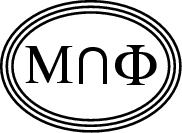
Back to
OP page
Combined
List
List by
Contributors
 Back to OP page Combined List List by Contributors |
SHORT-RANGE SPIN GLASSESContributed by: C.M. Newman (Courant Inst.) and D.L. Stein (Univ. Arizona), Sept. 18, 1998.Consider a simple Edwards-Anderson Ising spin glass, which is an Ising model on Zd, whose nearest neighbor couplings are independent, identically distributed random variables with mean zero and finite variance (e.g., Gaussian). In the absence of an external magnetic field, the following are open questions (all statements below are understood to apply to almost every coupling realization): |